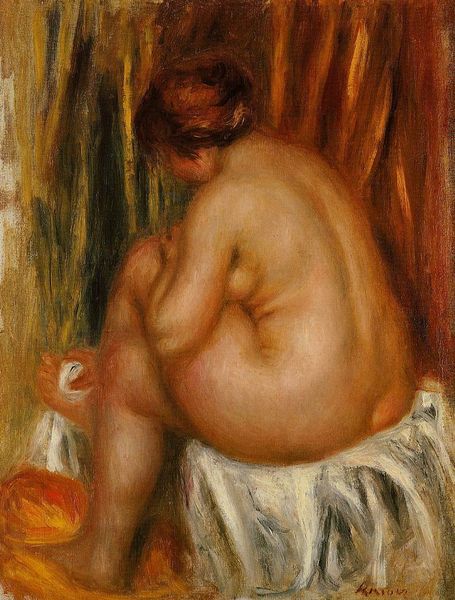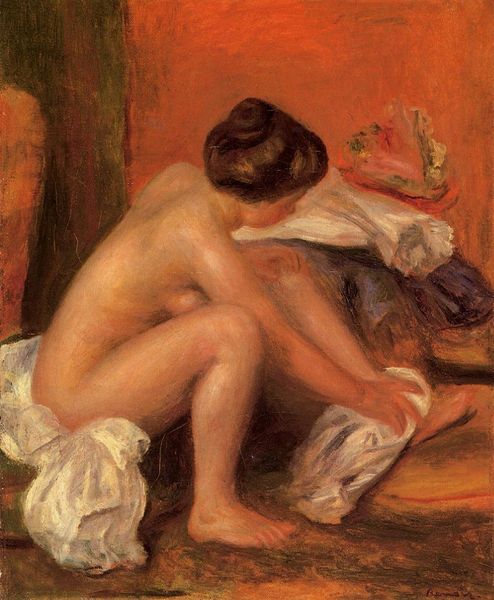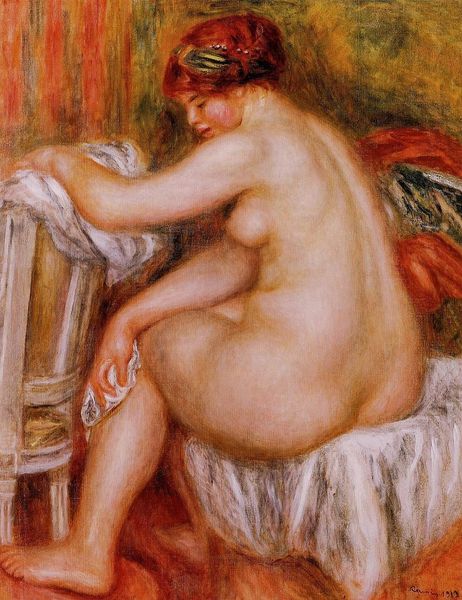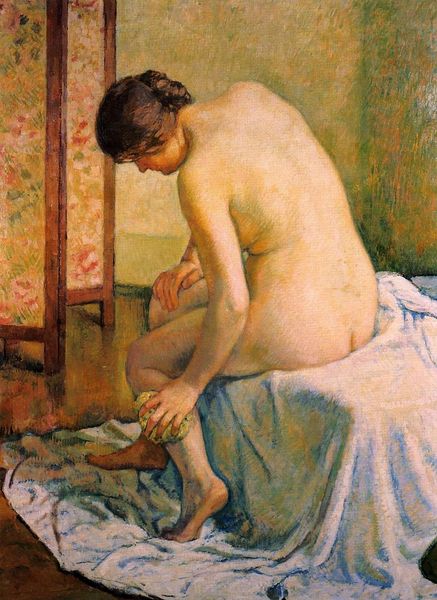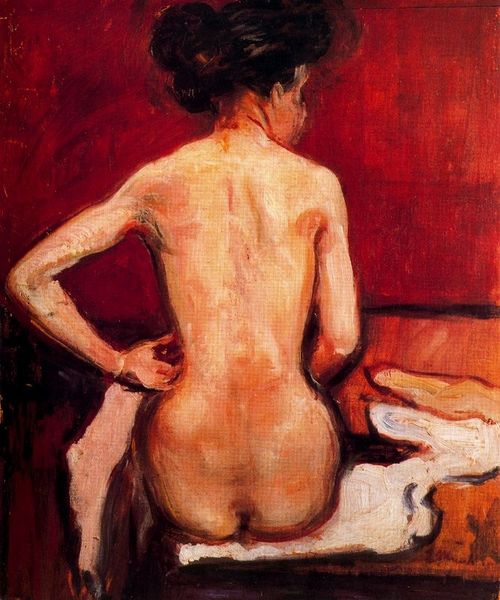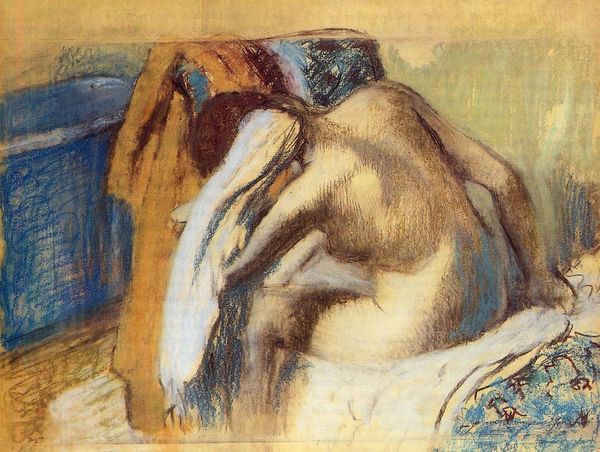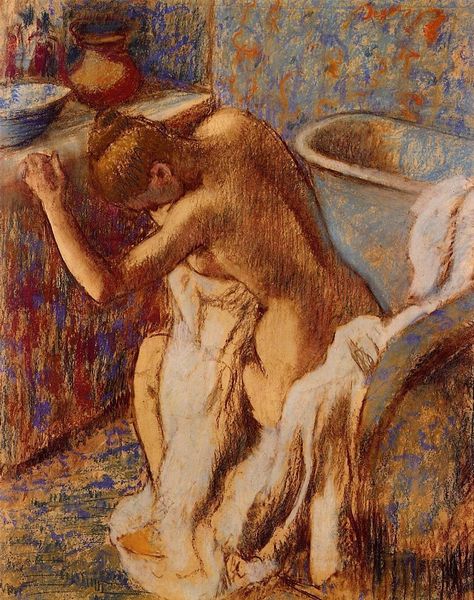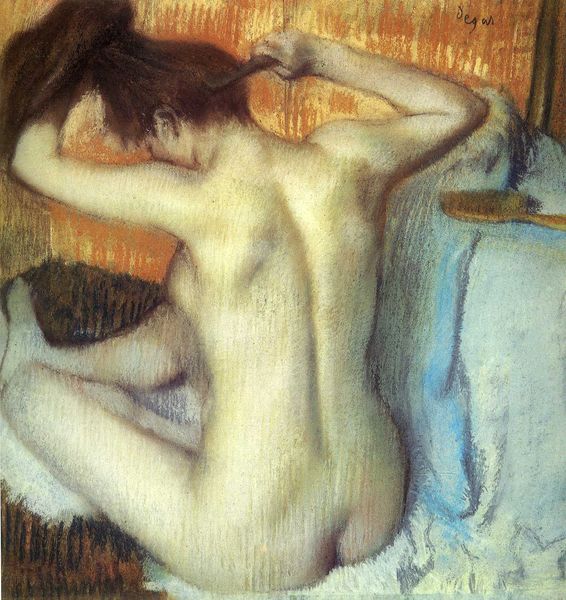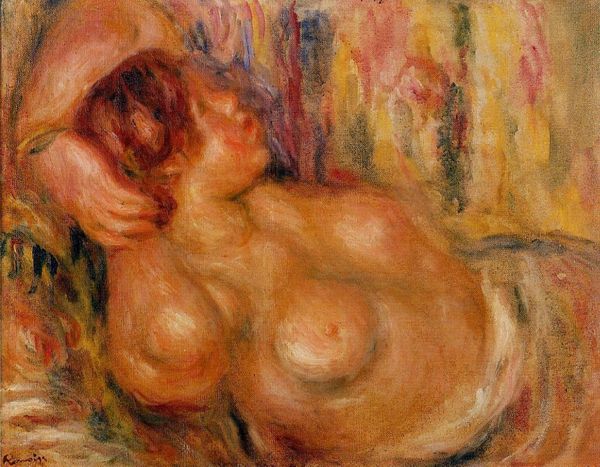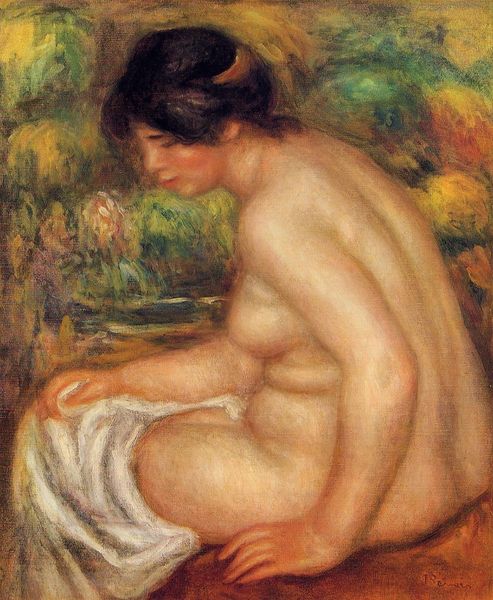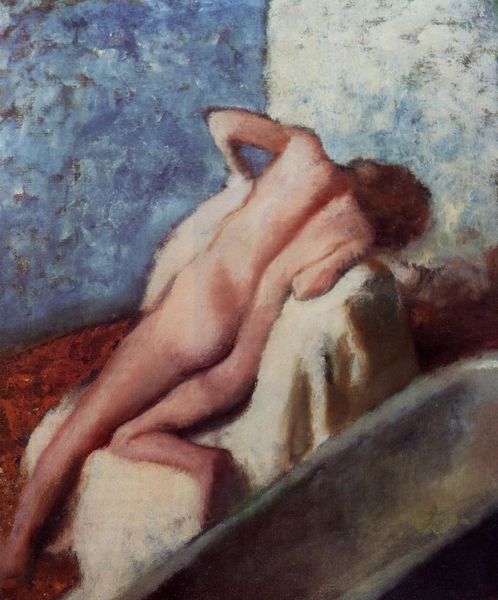
drawing, pastel
#
portrait
#
drawing
#
self-portrait
#
impressionism
#
figuration
#
oil painting
#
intimism
#
portrait drawing
#
pastel
#
post-impressionism
#
nude
#
portrait art
Copyright: Public domain
Editor: This is Edgar Degas’ “Woman Having a Bath,” created around 1888. It’s a pastel drawing and it strikes me as very intimate – like a stolen glimpse. How do you interpret this work, especially considering the time it was made? Curator: It's precisely that intimacy that makes it historically significant. Degas's work exists within a fascinating tension. On the one hand, we have the Impressionist focus on modern life, readily depicting scenes of everyday activity. However, that this woman is nude makes the scene more complicated. Editor: Complicated in what way? Curator: Well, who do you imagine was seeing images like this? How were they displayed and for what audiences? This was a time when ideas about women's bodies were often very controlled, at least publicly. Showing a woman bathing challenged societal norms, yet, by focusing on a moment of private, personal hygiene, it’s de-eroticized. This everyday aspect softens any potential shock. It opens a space for thinking about women as individual subjects rather than just objects of male gaze. What do you think about that tension? Editor: I hadn't considered the societal implications so directly. I was more focused on the artistic skill, the way he captured the light. So, he’s presenting a challenge, but doing it subtly? Curator: Exactly. He invites the viewer to reconsider their assumptions and biases concerning female nudes, while working within the acceptable stylistic frameworks of the time, Impressionism in general being still considered revolutionary at that time. Editor: I've always appreciated Degas’ work, but I never thought about it in terms of social commentary. It provides a deeper understanding. Curator: Precisely. And the context truly amplifies its significance.
Comments
No comments
Be the first to comment and join the conversation on the ultimate creative platform.
